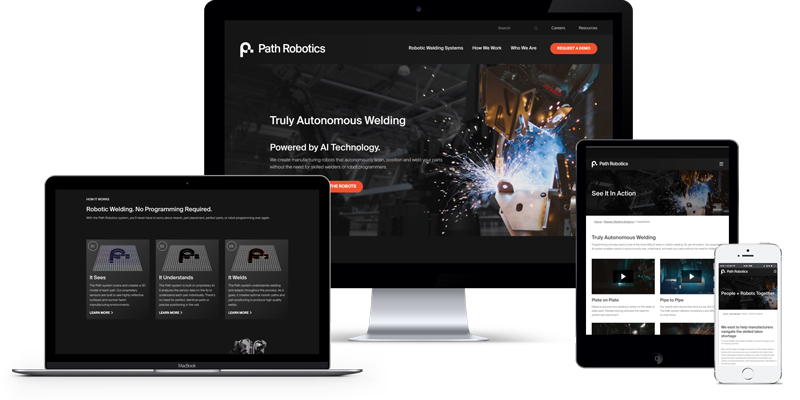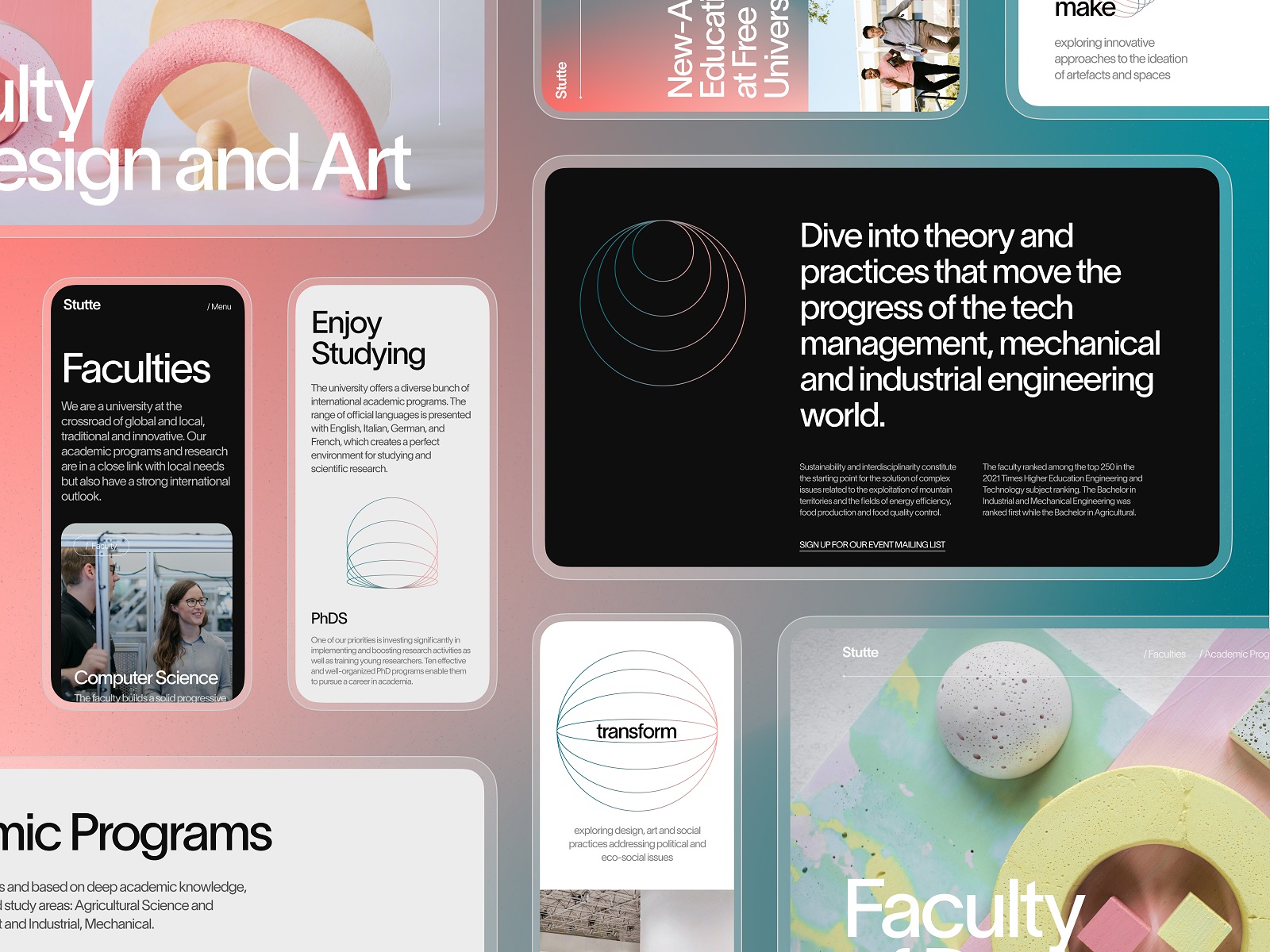Website Design for Local Businesses: Crucial Components for Success
Crucial Principles of Site Style: Producing User-Friendly Experiences
By focusing on individual requirements and choices, designers can cultivate interaction and complete satisfaction, yet the ramifications of these principles prolong beyond mere capability. Recognizing just how they intertwine can substantially influence a website's total efficiency and success, motivating a closer evaluation of their individual functions and collective influence on individual experience.

Significance of User-Centered Style
Prioritizing user-centered design is vital for creating reliable websites that meet the needs of their target market. This technique puts the customer at the leading edge of the layout procedure, ensuring that the internet site not only works well however additionally resonates with customers on an individual degree. By understanding the individuals' behaviors, goals, and preferences, designers can craft experiences that foster interaction and complete satisfaction.

Additionally, taking on a user-centered style philosophy can bring about enhanced access and inclusivity, catering to a varied audience. By thinking about numerous individual demographics, such as age, technological efficiency, and cultural backgrounds, developers can develop websites that rate and functional for all.
Inevitably, focusing on user-centered layout not just enhances individual experience but can also drive crucial organization end results, such as boosted conversion rates and client loyalty. In today's competitive digital landscape, understanding and focusing on customer demands is a critical success factor.
Intuitive Navigation Frameworks
Reliable website navigating is often an essential element in boosting individual experience. Intuitive navigating frameworks make it possible for customers to find information promptly and effectively, decreasing frustration and raising involvement.
To create instinctive navigating, designers need to prioritize quality. Labels ought to be acquainted and detailed to users, preventing lingo or unclear terms. A hierarchical framework, with primary groups causing subcategories, can additionally assist users in recognizing the connection between different sections of the website.
Additionally, incorporating aesthetic hints such as breadcrumbs can assist users with their navigation path, enabling them to quickly backtrack if needed. The incorporation of a search bar likewise improves navigability, giving users guide accessibility to content without needing to browse with multiple layers.
Responsive and Flexible Formats
In today's electronic landscape, guaranteeing that websites work effortlessly throughout various devices is vital for customer contentment - Website Design. Receptive and flexible formats are two crucial techniques that enable this functionality, dealing with the diverse series of screen sizes and resolutions that customers may encounter
Responsive designs use liquid grids and versatile pictures, allowing the internet site to automatically readjust its aspects based upon the display dimensions. This technique offers a regular experience, where content reflows dynamically to fit the viewport, which is specifically advantageous for mobile users. By using CSS media questions, designers can create breakpoints that optimize the design for different tools without the requirement for different layouts.
Flexible formats, on the various other hand, utilize predefined designs for specific screen dimensions. When a user accesses the website, the server spots the gadget and offers the appropriate design, making certain a maximized experience for differing resolutions. This can bring about faster packing times and boosted efficiency, as each layout is tailored to the tool's capabilities.
Both flexible and receptive designs are crucial for enhancing user interaction and satisfaction, inevitably contributing to the website's general effectiveness in meeting its purposes.
Constant Visual Power Structure
Establishing a consistent aesthetic pecking order is critical for directing customers via a website's material. This principle makes certain that details exists in a fashion that is both user-friendly and engaging, enabling users to quickly navigate and understand the product. A distinct power structure uses various layout aspects, such as dimension, contrast, spacing, and shade, to create a clear distinction between various news kinds of web content.

Moreover, constant application of these visual hints throughout the site fosters experience and trust. Individuals can promptly learn to recognize patterns, making their communications more effective. Eventually, a solid aesthetic pecking order not just boosts customer experience but also improves total site use, urging much deeper involvement and assisting in the preferred actions on a site.
Accessibility for All Users
Accessibility for all individuals is an essential facet of internet site layout that makes certain every person, no matter their handicaps or abilities, can engage with and take advantage of on-line content. Creating with access in mind includes applying techniques that accommodate varied user demands, such as those with visual, auditory, motor, or cognitive problems.
One essential guideline is to stick to the Web Web Content Access Standards (WCAG), which offer a structure for creating easily accessible digital experiences. This includes utilizing sufficient color contrast, supplying message alternatives for pictures, and ensuring that navigation is keyboard-friendly. Furthermore, utilizing responsive design methods guarantees that websites function efficiently across numerous gadgets and screen sizes, additionally boosting accessibility.
An additional critical variable is making use of clear, succinct language that avoids jargon, making material comprehensible for all individuals. Engaging individuals with assistive innovations, such as screen viewers, needs mindful attention to HTML semantics and ARIA (Available Abundant Web Applications) duties.
Ultimately, focusing on accessibility not just meets legal obligations but additionally expands the target market reach, fostering inclusivity and improving individual complete satisfaction. A dedication to accessibility reflects a devotion to producing equitable electronic atmospheres for site here all users.
Verdict
In final thought, the check here crucial principles of website design-- user-centered design, instinctive navigation, receptive layouts, regular visual hierarchy, and ease of access-- jointly add to the development of easy to use experiences. Website Design. By prioritizing customer needs and ensuring that all individuals can effectively involve with the site, developers enhance use and foster inclusivity. These principles not just boost user satisfaction but additionally drive positive organization end results, ultimately showing the vital relevance of thoughtful internet site design in today's digital landscape
These approaches supply important insights right into individual expectations and discomfort factors, enabling developers to customize the website's features and material accordingly.Reliable web site navigating is often an important element in enhancing user experience.Developing a constant aesthetic pecking order is crucial for directing customers via a site's material. Inevitably, a solid aesthetic pecking order not only enhances individual experience but likewise improves overall website functionality, motivating deeper involvement and facilitating the preferred actions on a web site.
These principles not just boost customer contentment but also drive favorable business outcomes, inevitably demonstrating the vital significance of thoughtful internet site layout in today's electronic landscape.